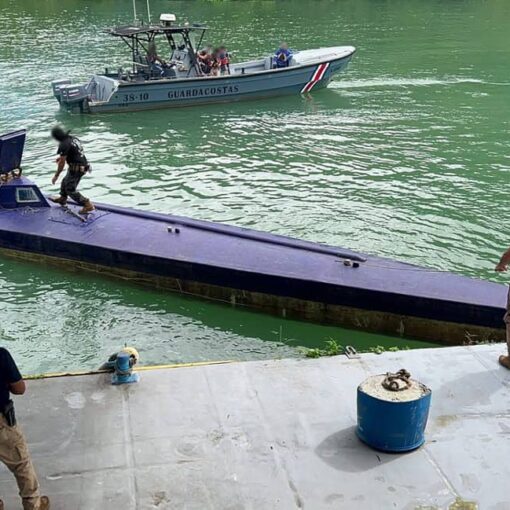Costa Rica, July 2025 – Costa Rica’s reputation as a tropical haven is facing its toughest test in years. Once celebrated for its sloths, surf breaks and “pura vida” tranquility, the nation now wrestles with falling visitor numbers amid a spike in crime that has tourists—and travel advisors—second-guessing their plans. As arrivals dip and safety perceptions sour, the stakes couldn’t be higher: tourism accounts for roughly 8% of Costa Rica’s GDP and supports thousands of jobs. This deep dive examines the data, hears from the players on both sides of the debate, and outlines what must happen to restore confidence in the land of “rich coast.”
Shifting Winds: Numbers Tell a Grim Tale
The early indicators of a tourism slowdown are unmistakable. In the first two months of 2025, stopovers plummeted 4.0%, from 617,024 in Jan–Feb 2024 to just 592,259 in the same period this year. May saw a 4.7% decline in air arrivals compared to May 2024, marking the seventh consecutive month of year-over-year drops. Cumulatively, visitor numbers fell 2.5% from January through May 2025—a staggering reversal after years of steady growth. Industry bodies now warn that, if unchecked, tourist arrivals could shrink by as much as 15–20% by late 2025.
Under the Radar: Crime at the Heart of Tourist Hesitation
Behind the numbers lies a harder truth: rising criminal activity in key destinations has rattled travelers. A recent La Nación investigation found that more than 6,300 tourists fell victim to crimes—predominantly robberies and vehicle theft—in the last five years, with hotspots including Jacó, Cahuita and Tamarindo. In 2023 alone, the Judicial Investigation Agency (OIJ) logged 1,447 offenses against tourist property, of which Jacó accounted for 279 and Cahuita 194. Meanwhile, the national homicide tally hit a record 900+ last year, with 225 more homicides recorded in the first half of 2025—statistics that make front-page headlines abroad and feed fear among prospective visitors.
Government in Damage Control: Denials and Defensive Tactics
Faced with a barrage of travel advisories—from Canada’s March 2025 warning about thefts in Cóbano and San José, to the U.S. Department of State’s December 2024 Level 2 alert citing armed robbery and homicide risk—Costa Rican officials have pushed back hard. Tourism Minister William Rodríguez insists the sector is “dealing with a challenge, not a crisis,” highlighting that 93% of guests report feeling safe during their stay. He also attributes part of the drop to a 10% reduction in airline seat capacity early this year, and argues a true crisis would only materialize beyond a 20% contraction in arrivals Yet for many hoteliers and tour operators, such explanations ring hollow.
Private Sector Speaks Out: “Walk the Talk” Demands Industry Leaders
Hoteliers in Guanacaste and community guides in Limón aren’t reassured by optimistic official bulletins. “We’re not just losing guests—we’re forfeiting growth we expected,” says Carla Méndez, a Tamarindo tour operator. “A 2.5% drop is really a 5% swing when you factor in our historic growth rates”. The National Chamber of Tourism (CANATUR) echoes the sentiment, pointing to an 8.2% GDP reliance on tourism and warning that any sustained slide could threaten $7 billion in annual revenues and thousands of livelihoods.
Economic Ripples: When Tourism Stumbles, the Nation Shudders
The fallout extends far beyond hotel occupancy charts. Taxi drivers, surf schools, restaurant staff and souvenir vendors all feel the pinch. Coastal communities—once humming with international arrivals—report lower nightly rates and canceled group bookings, eroding margins already squeezed by a strong colón versus the dollar. Compared to regional peers like Panama, which saw a 12% surge in U.S. arrivals in early 2025, Costa Rica’s price competitiveness and safety image are under threat.
Soft Spot: Balancing Safety Perceptions and Hard Data
Some analysts caution against alarmism. A recent Travel & Tourism Development Index report from the World Economic Forum ranked Costa Rica highly for environmental sustainability and infrastructure. Moreover, social-media sentiment analysis shows that fewer than 1% of online conversations about Costa Rica travel mention safety concerns Yet perception often trumps data; seasoned travelers weigh anecdotal warnings heavily, and tour cancellation rates have climbed accordingly. Restoring confidence is as much about narrative as numbers.
Taking Charge: Proposed Solutions and Recommendations
Industry experts urge a three-pronged approach:
- Visible Policing and Rapid Response: Deploy dedicated tourist police units and clear crime-reporting channels, with regular performance updates to reassure international audiences.
- Targeted Marketing Campaigns: Amplify success stories—wildlife conservation wins, award-winning lodges—that reinforce Costa Rica’s unique value proposition, while transparently acknowledging recent challenges.
- Community Engagement and Prevention: Invest in grassroots initiatives like Nosara’s neighborhood watch programs, offering grants for local security technology and training for hospitality staff in de-escalation tactics.
“Transparency is key,” says Bary Roberts, a veteran tourism consultant. “Admit there’s an issue, showcase corrective measures, and let the data prove you’re getting results.”
The Road Ahead: Can “Pura Vida” Prevail?
Costa Rica’s allure has always blended pristine nature with warm hospitality. But preserving that magic requires swift, coordinated action between government bodies, private operators and local communities. With the high season on the horizon, every delayed measure risks further erosions in visitor trust—and revenue. Yet with targeted interventions and honest communication, there’s reason for optimism: after all, no beach is too sun-baked, no jungle too wild, for Costa Rica to reclaim its status as the world’s quintessential eco-tourism hotspot.
Source link
Admin


